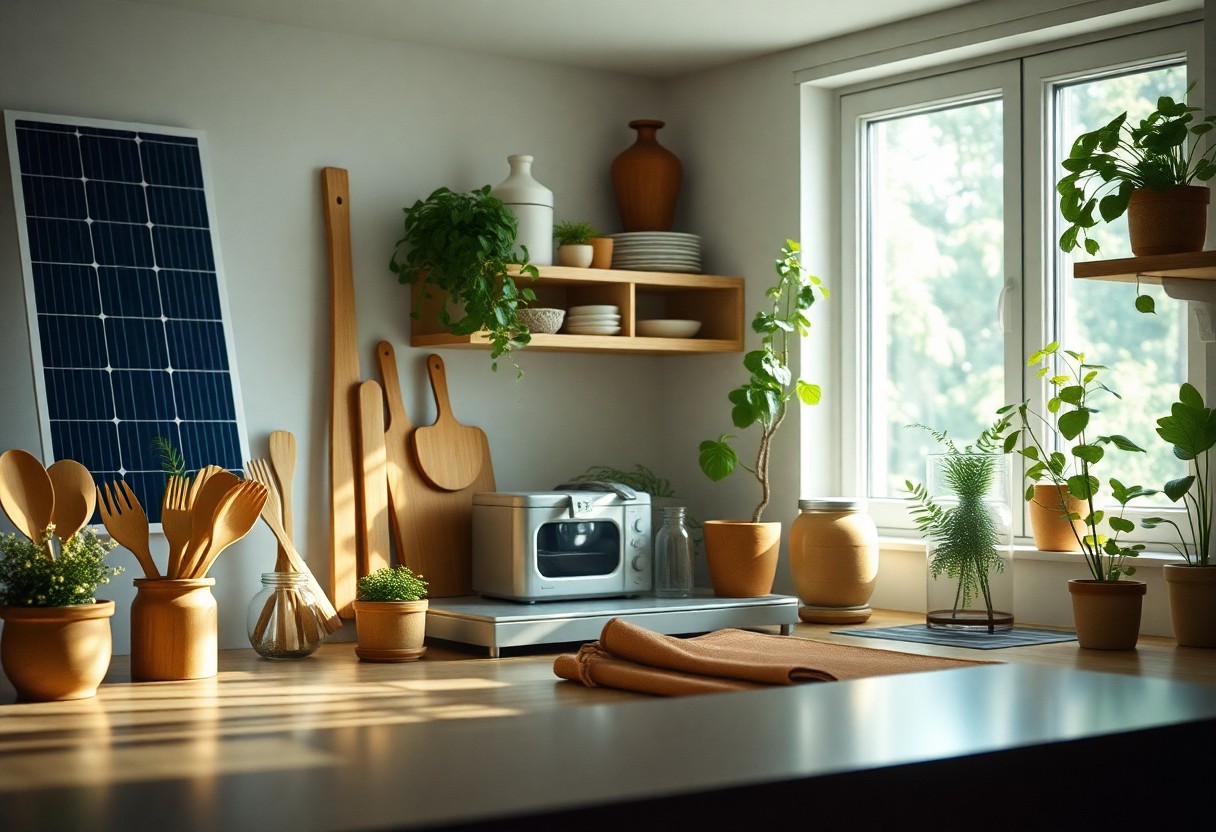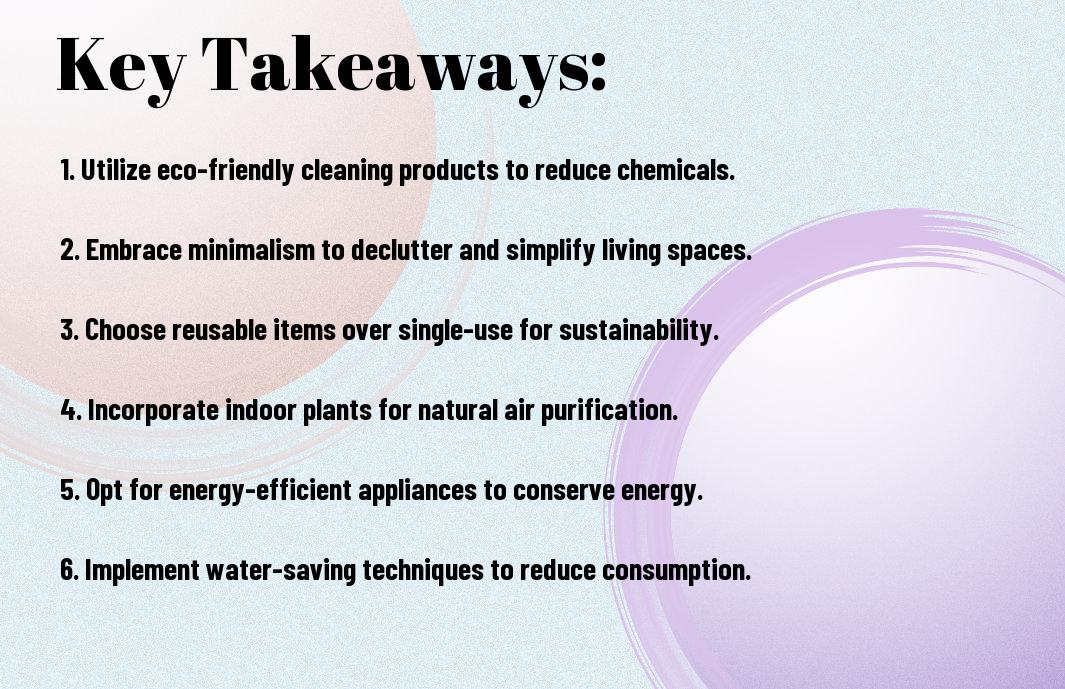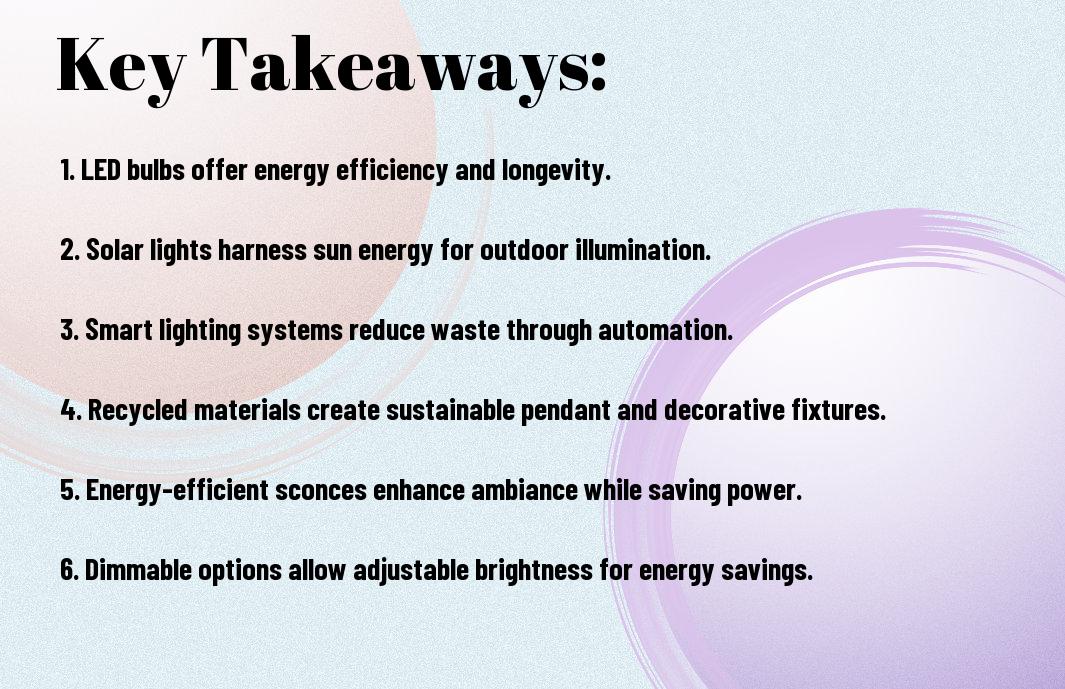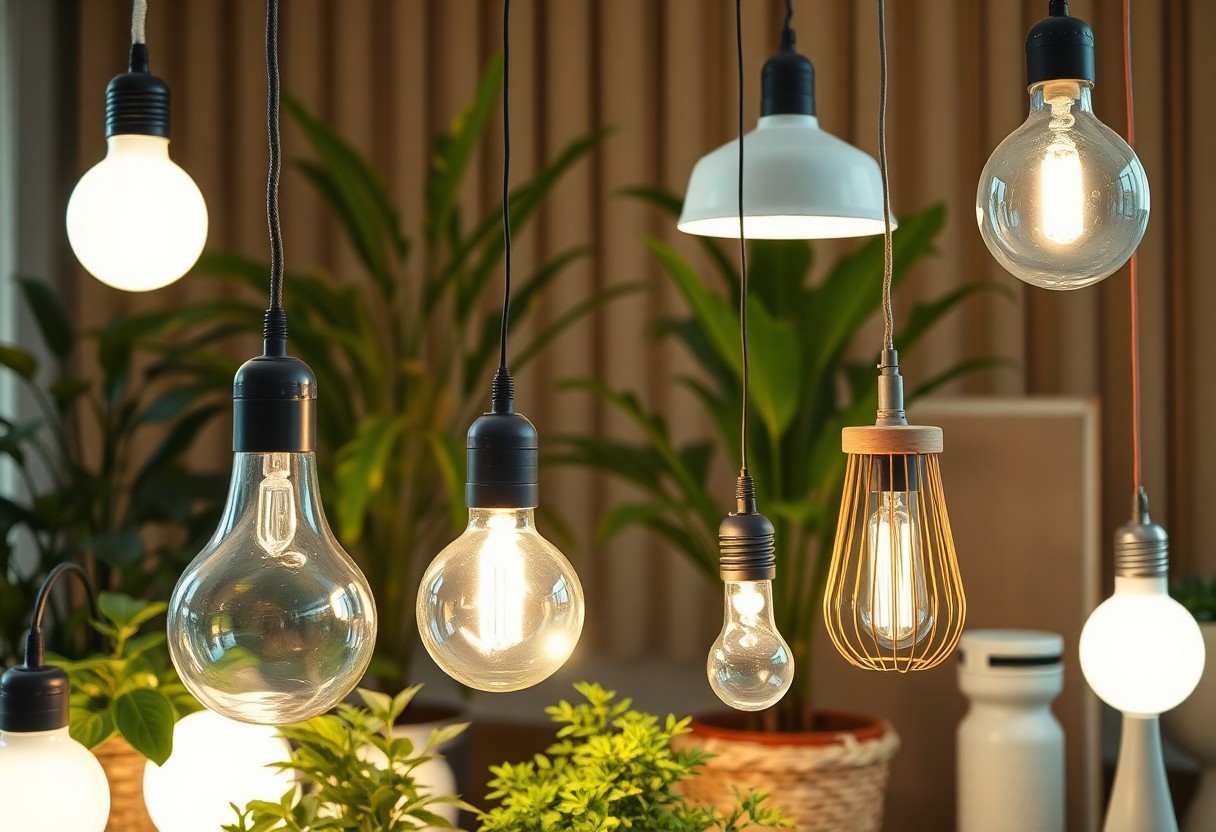As you strive to maintain a clean and healthy living space, you’re likely looking for ways to reduce your environmental footprint. Your home can be a significant contributor to waste and pollution, but with the right strategies, you can make a positive impact. You can start by implementing eco-friendly habits and investing in sustainable products that promote a cleaner and greener home, ultimately benefiting your well-being and the planet.

Key Takeaways:
To achieve a cleaner and more sustainable home, consider the following points:
- Implementing eco-friendly practices such as reducing waste, reusing materials, and recycling can significantly minimize your environmental footprint.
- Using natural cleaning products and avoiding harsh chemicals can help maintain a healthy indoor environment and reduce pollution.
- Incorporating energy-efficient appliances and sustainable lighting solutions can help reduce your home’s carbon footprint and lower your energy bills.
- Adopting a minimalist approach to consumption and avoiding single-use products can help reduce waste and promote a more sustainable lifestyle.
- Creating a sustainable home also involves conserving water and using water-efficient fixtures to reduce your overall water usage and protect this valuable resource.
Simple Swaps for a Greener Home
Before making any significant changes, you can start by incorporating small adjustments to your daily habits, which will eventually lead to a more sustainable lifestyle, and a cleaner home.
Eco-Friendly Cleaning Products
Alongside traditional cleaning methods, you can adopt alternatives that are gentler on the environment, allowing you to maintain your home’s cleanliness while reducing your ecological footprint.
Sustainable Materials for Decor
Around your home, you can replace decorative items with sustainable materials, such as bamboo or recycled wood, to create a cozy and eco-friendly atmosphere, enhancing your space.
Decor choices you make can greatly impact the overall aesthetic and sustainability of your home, so when selecting materials, you should consider the environmental effects of your decisions, and choose options that align with your values, allowing you to create a beautiful and green space that you can enjoy.

Reducing Waste and Conservation
There’s a significant impact you can make by adopting sustainable habits in your home. By making a few simple changes, you can reduce your waste output and contribute to a cleaner environment.
Minimizing Single-Use Plastics
Betwixt the numerous options available, you can opt for reusable bags, containers, and water bottles to minimize single-use plastics in your daily life, reducing the amount of waste you generate.
Water Conservation Techniques
Any small change you make to your daily routine can help conserve water, such as fixing leaks and using low-flow fixtures, which will significantly impact your water consumption.
This technique not only saves you money on your water bill but also helps to preserve this precious resource for future generations, and by implementing these simple changes, you can make a significant difference in your water conservation efforts, allowing you to maintain a cleaner and more sustainable home.
Energy Efficiency and Savings
Once again, you can make a significant impact on the environment by adopting energy-efficient practices in your home. You can start by reducing your energy consumption, which will not only help the planet but also save you money on your utility bills.
LED Lighting and Appliances
Economically, switching to LED lighting and energy-efficient appliances is a smart move, as they use significantly less energy than traditional options, allowing you to reduce your carbon footprint and lower your energy bills.
Insulation and Draft Proofing
Optimally, you should prioritize insulation and draft proofing in your home to prevent heat from escaping, which can help you save energy and reduce your reliance on heating systems, making your home more comfortable and eco-friendly.
Lighting your way to a more sustainable future, proper insulation and draft proofing can make a significant difference in your home’s energy efficiency, and you can start by checking for gaps and cracks in your windows, doors, and walls, and sealing them to prevent heat from escaping, allowing you to enjoy a warmer and more comfortable home while reducing your energy consumption.
Healthy Indoor Air Quality
Despite the comfort of your home, indoor air pollution can be a significant concern. You can improve air quality by choosing products that minimize harm, learn more about Identifying Greener Cleaning Products | US EPA to make informed decisions.
Natural Air Purification Methods
Beneath the surface of traditional air purification systems, you’ll find natural methods like plants that can help purify the air in your home, providing a healthier environment for you and your family.
Ventilation and Moisture Control
Inside your home, proper ventilation and moisture control are important for maintaining healthy air quality, as they help prevent mold growth and reduce allergens.
And as you focus on ventilation and moisture control, you’ll find that simple actions like opening windows, using exhaust fans, and fixing leaks can significantly improve the air quality in your home, allowing you to breathe easier and enjoy a healthier living space.
Sustainable Lifestyle Choices
Your daily habits and choices have a significant impact on the environment, and making sustainable lifestyle changes can greatly contribute to a cleaner home and a healthier planet.
Buying Second-Hand and Repurposing
Along with reducing waste, buying second-hand items and repurposing old ones can help minimize your environmental footprint and give new life to discarded products.
Reducing Paper and Digital Waste
Around your home, you can take steps to reduce paper waste by switching to digital documents and bills, and minimizing your use of paper products.
With a few simple changes, you can significantly reduce your paper and digital waste, such as canceling unwanted subscriptions, using reusable notes, and recycling old electronics, which will not only help the environment but also help you stay organized and clutter-free.
Innovative Solutions for a Cleaner Home
All around your home, there are opportunities to implement innovative solutions for a cleaner and more sustainable living space. You can explore various options that not only reduce your environmental footprint but also make your life easier and more convenient.
Smart Home Devices and Automation
One of the most significant advancements in home cleaning is the integration of smart devices and automation. You can invest in smart vacuums, thermostats, and lighting systems that can be controlled remotely, making it easier for you to manage your home’s energy consumption and maintenance.
Green Technology and Renewable Energy
An vital aspect of creating a cleaner home is incorporating green technology and renewable energy sources. You can consider installing solar panels, using energy-efficient appliances, and implementing a recycling system to reduce your waste and carbon footprint.
Another advantage of green technology is that it can help you save money on your energy bills in the long run. You can explore various options such as wind power, geothermal energy, and biofuels to power your home, reducing your reliance on non-renewable energy sources and creating a cleaner and healthier living environment for you and your family.
Summing up
The key to a cleaner home lies in your ability to adopt sustainable solutions. You can start by making small changes to your daily habits, such as reducing waste and using eco-friendly products. By doing so, you will not only contribute to a healthier environment, but also create a more sustainable living space for yourself and your family. Your efforts will have a significant impact on the planet, and you will be proud of your accomplishments.
FAQ
Q: What are the benefits of using eco-friendly cleaning products for a sustainable home?
A: Using eco-friendly cleaning products is an effective way to reduce the environmental impact of your cleaning routine. These products are made from natural ingredients, are biodegradable, and free from harsh chemicals, which can harm the environment and human health. By switching to eco-friendly cleaning products, you can help minimize water pollution, reduce air pollution, and create a healthier indoor environment for you and your family. Additionally, many eco-friendly cleaning products are also cost-effective and can help you save money in the long run.
Q: How can I reduce waste and maintain a clutter-free home as part of my sustainable living efforts?
A: Reducing waste and maintaining a clutter-free home is imperative for a sustainable lifestyle. You can start by adopting a few simple habits such as recycling, composting, and repurposing items. Avoid buying products with excess packaging, choose products with minimal packaging, and opt for reusable bags and containers. Implementing a “one in, one out” policy can also help maintain a clutter-free home, where you get rid of an old item each time you bring a new one into your home. Donating, selling, or repurposing old items can also help reduce waste and support sustainable living.
Q: What are some simple and effective ways to conserve energy and water in my home to contribute to a more sustainable future?
A: Conserving energy and water is vital for a sustainable home. Simple actions such as switching to energy-efficient light bulbs, turning off lights and electronics when not in use, and using power strips to plug in electronics can help reduce energy consumption. To conserve water, fix leaky faucets, take shorter showers, and install low-flow showerheads and toilets. You can also harvest rainwater for non-potable uses such as watering plants or washing cars. Additionally, using a programmable thermostat to regulate your heating and cooling system can also help reduce energy consumption and lower your utility bills.

